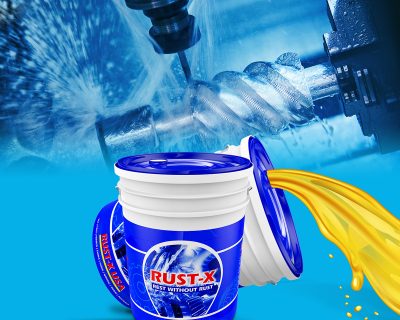
Understanding the Lifetime of Release of VCI
Vapour corrosion inhibitors (VCIs) are becoming increasingly popular in various industries because they provide an efficient and cost-effective solution to corrosion prevention. The lifetime of release of vapour corrosion inhibitors plays a critical role in their effectiveness in preventing corrosion. In this article, we will explore what VCIs are, how they work, and the factors that influence their lifetime of release. We will also delve into the latest research and data on this topic and provide practical advice on how to choose the right VCI for your needs.
What are Vapour Corrosion Inhibitors (VCI)?
Vapour corrosion inhibitors (VCIs) are chemical compounds that work by releasing vapour molecules into the air to prevent corrosion on metal surfaces. They work by forming a protective layer on the surface of the metal, which inhibits the corrosion process. VCIs are typically used in enclosed spaces, such as shipping containers, storage units, and packaging materials.
How do VCIs Work?
VCIs work by releasing vapour molecules into the air, which then form a protective layer on the metal surface. This layer inhibits the corrosion process by blocking the oxygen and moisture that are necessary for corrosion to occur. VCIs can be used to protect a wide range of metals, including steel, copper, brass, and aluminum.
Factors that Influence the Lifetime of Release of VCIs
The lifetime of release of VCIs can be influenced by various factors, including the chemical composition of the VCI, the surface area of the metal being protected, the temperature and humidity of the environment, and the length of time the metal is exposed to the VCI.
Chemical Composition of the VCI
The chemical composition of the VCI can significantly affect its lifetime of release. Different VCIs have different chemical properties, which can influence their ability to release vapour molecules and form a protective layer on the metal surface. It is essential to choose a VCI with the right chemical composition for the metal being protected and the environment in which it will be used.
Surface Area of the Metal Being Protected
The surface area of the metal being protected can also impact the lifetime of release of VCIs. A larger surface area requires more VCI to form a protective layer, which can lead to faster depletion of the VCI and a shorter lifetime of release. It is essential to use the appropriate amount of VCI to ensure adequate protection and maximize its lifetime of release.
Temperature and Humidity of the Environment
The temperature and humidity of the environment can also influence the lifetime of release of VCIs. Higher temperatures and humidity levels can accelerate the corrosion process, leading to faster depletion of the VCI and a shorter lifetime of release. It is crucial to store metal items in a cool, dry place to maximize the effectiveness and lifetime of release of the VCI.
FAQs:
Q1. How long does a VCI last?
A1. The lifetime of release of a VCI can vary depending on various factors, including the chemical composition of the VCI, the surface area of the metal being protected, the temperature and humidity of the environment, and the length of time the metal is exposed to the VCI.
Q2. What metals can VCIs protect?
A2. VCIs can be used to protect a wide range of metals, including steel, copper, brass, and aluminum.
Q3. Can VCIs be used for outdoor storage?
A3. Yes, VCIs can be used for outdoor storage, but the effectiveness and lifetime of release of the VCI may be affected by environmental factors such as temperature and humidity.






